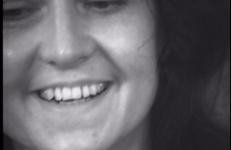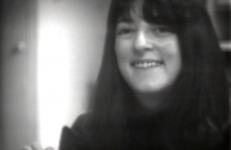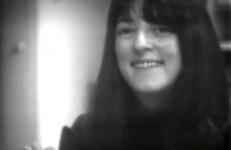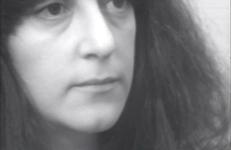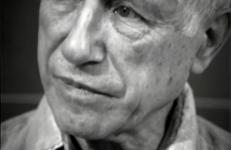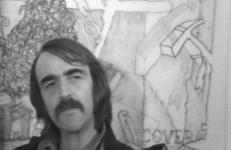Born in Los Angeles in 1933, Michelle Stuart spearheaded the use of non-traditional materials from nature in the early '70s, and has produced and exhibited her work internationally.
Blumenthal/Horsfield Interviews
In April 1974, Video Data Bank co-founders Lyn Blumenthal and Kate Horsfield conducted their first interview, an in-depth conversation with art historian and curator Marcia Tucker. During the remainder of that year, Blumenthal and Horsfield went on to interview four more notable art world women: Joan Mitchell, Lucy Lippard, Agnes Martin and Ree Morton.
Marcia Tucker (1940-2006) was a curator, writer and art historian, known for founding the New Museum of Contemporary Art after her dismissal from her curatorial post at the Whitney Museum of American Art, due to creative disagreements. Tucker served as the visionary director of the New Museum from 1977 to 1999, during which time she organized major exhibitions like The Time of Our Lives (1999), A Labor of Love (1996), and Bad Girls (1994), and edited the series Documentary Sources in Contemporary Art.
Marcia Tucker (1940 - 2006) was a curator, writer and art historian, known for founding the New Museum of Contemporary Art after her dismissal from her curatorial post at the Whitney Museum of American Art due to creative disagreements. Tucker served as the visionary director of the New Museum from 1977 to 1999, during which time she organized major exhibitions like The Time of Our Lives (1999), A Labor of Love (1996), and Bad Girls (1994), and edited the series Documentary Sources in Contemporary Art. As a curator,Tucker championed social engagement, exploration and artistic process. She considered the museum a “laboratory” organization where both art and the practices of the institution itself were always in question. After leaving the New Museum, and until her death in 2006, Tucker worked as a freelance art critic, writer, and lecturer.
Jack Tworkov (1900-1982) was an important member of the first generation of Abstract Expressionist painters and was, for a number of years, head of the Yale University art program. During the Depression, Tworkov worked for the WPA Federal Art Project, and became friends with artists such as Willem de Kooning, Arshile Gorky, and Mark Rothko; their work was the foundation of the New York School of painting. Late in his career, his work became more geometric, as the mark and gesture was increasingly determined by isometric grid structures.
William T. Wiley (b. 1937) combines a variety of materials (found objects, wood, animal hides, rope, paint) with poetry, puns, hearsay, and legends to present a very complex and enigmatic personal vision. Besides making sculpture, he also does prints, drawings, and paintings. His witty and often ironic work emphasizes both the commonality and impenetrability of everyday life and its contents. Wiley continues to live and work in the San Francisco Bay area.




